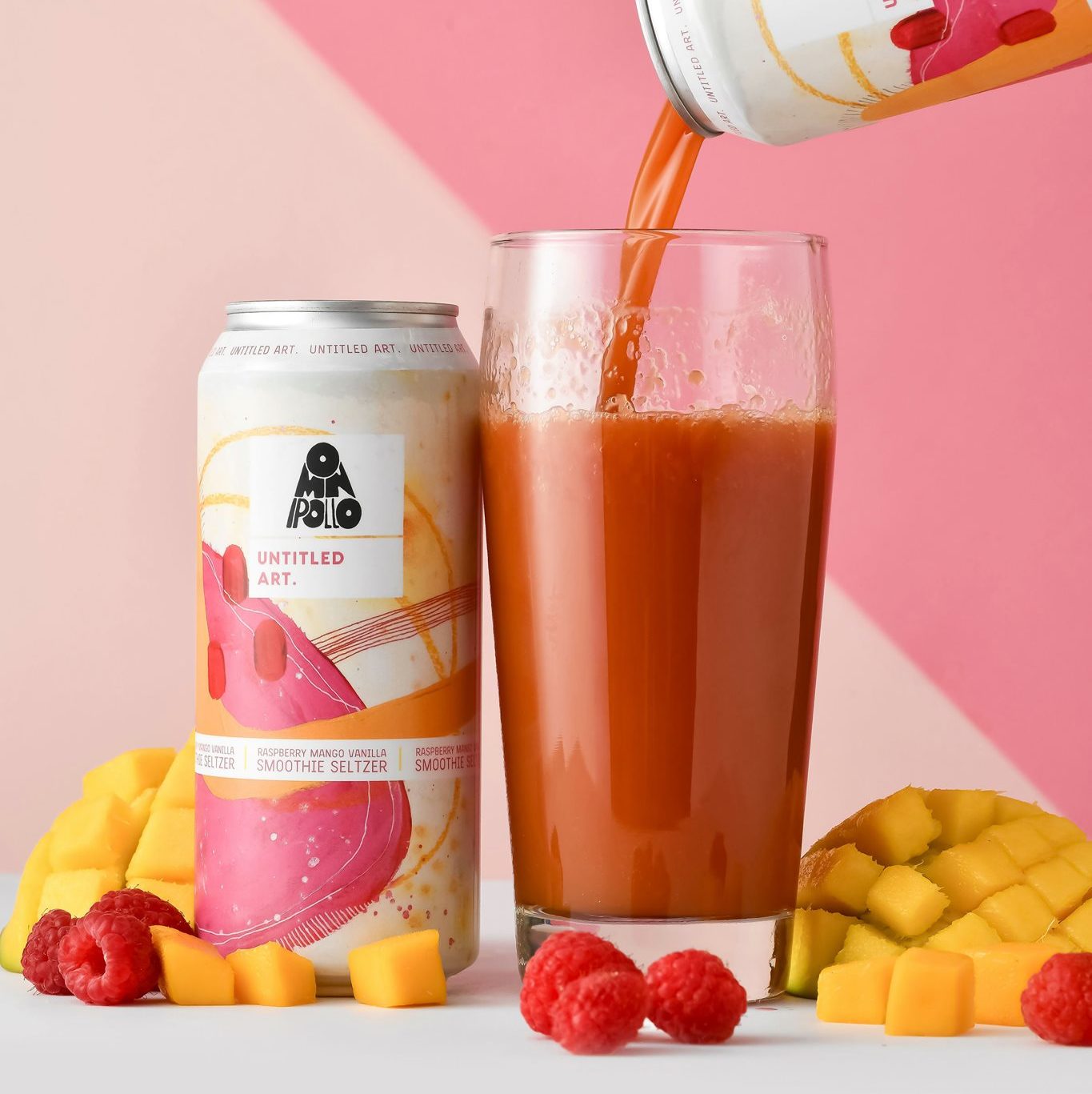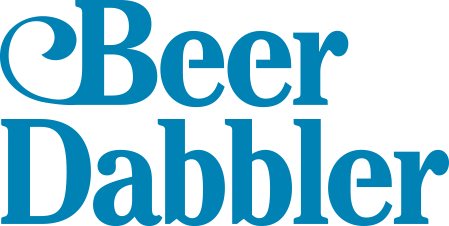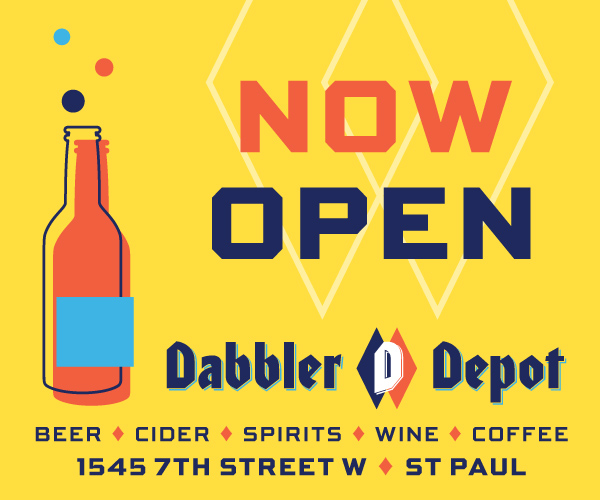
Untitled Art Raspberry Mango Vanilla Smoothie Seltzer • Photo via Untitled Art
Over the past half-decade, beer has gotten closer and closer to emulating Jamba Juice.
From pulpy, ultra-turbid New England IPAs to sour beers that look like they were brewed by Smucker’s, breweries have gone well beyond the bounds of traditional brewing to make their beers taste more freshly squeezed. Of course, this trend has developed in lockstep with the hard seltzer craze, and damn near every brewery in America now serves their house brand White Claw. It was only a matter of time until the two threads entwined.
Half hard seltzer, half fruit pureé, the hard smoothie seltzer is every bit the sensation as the two trends that merged to create it. The New York Times called hard smoothie seltzers “the season’s most surprising mash-up,” noting that the drink “tastes like a fizzy daiquiri or tropical cocktail.” There’s nothing surprising about the appeal of an Odwalla-thick fruit slurry that also gets you drunk. What’s perhaps surprising is how well it works.
“It all started two years ago when we started doing heavily fruited sours and the overly fruited slush beers,” explains Cass Borgardt, sales representative for Eagle Park Brewing in Milwaukee. “They started becoming our best selling stuff.” But one consistent bit of feedback was that customers could still taste the underlying beer. The lightbulb moment came when they switched out the base sour or IPA for the company’s neutral seltzer. “We kind of hated how much we liked them.”
Eagle Park was not alone in their epiphany. Most credit the invention (or at least the popularization) of hard smoothie seltzers to Michigan’s HOMES Brewery, whose Smooj brand has become the archetype for the drink. As Borgardt alludes, smoothie seltzers have been on the scene in Minnesota and Wisconsin for about 18 months, and we’re now reaching a profusion of Smooj-adjacent drinks. Untappd returns 31 results for the style and smaller local breweries like BlackStack, Forager, OMNI, and Untitled Art have all begun creating their own lines of seltzer muddled with banana, guava, mango, orange, passionfruit, and coconut.

Eagle Park Hard Smoothie • Photo via Eagle Park Brewing
Like the overly fruited IPAs or sours that preceded them, smoothie seltzers are made with a ton of real fruit pureé, and they retail at roughly $20 for a 4-pack of tallboys. According to Borgardt, there is no shortcut to accomplishing the thickness at a lower price, so national and international players are unlikely to join in on the craze.
But smoothie seltzers do have a few advantages. They’re gluten-free. Since the seltzer base is usually filtered, there is little leftover yeast in each can, and they carry a much lower threat of refermentation and explosions. Most are packaged via tunnel pasteurization, so they’re stable, though the fruit does fall out of suspension after sitting for too long.
Fair State’s Fruity Boom series has emerged as a category leader. Before Fruity Boom, co-founder and head brewer Niko Tonks had been experimenting with using their high-ABV seltzer base to make on-tap cocktails and boozy slushies. Fruity Boom continues that same line of thinking, mimicking tiki drinks like piña coladas, Mai Tais, and rum runners.
“I went into it with the idea that it would be hard seltzer and real fruit puree, and just those two things,” Tonks says. “It turns out that really what people wanted was nostalgia cocktails.”
Tonks doesn’t see smoothie seltzer as a self-contained boom. For him, it’s a jumping-off point for more cocktail-driven emulations in Minnesota breweries. He’s already experimenting with barrel-aging the seltzer and creating point-of-service drink builds for those who choose to go the smoothie route.
“I would much rather drink pseudo-barrel-aged cocktails that encapsulate the spirit of a Mai Tai than a lactose kettle sour,” Tonks says. “It makes more sense for me, and for us as a brand, to go down that rabbit hole.”

Fair State Fruit Boom Hard Smoothie Seltzer • Photo via Fair State Brewing Cooperative
BlackStack Brewing co-founder and creative director Murphy Johnson knows his shop has a tendency to set the market for even the most fleeting national trends. Rain Check, their smoothie seltzer, was already on the brewing schedule when the HOMES guys sent the brewery a case of Smooj. Right then, he knew smoothie seltzers would be everywhere soon. Even if it might not be the longest-lived trend, they’re happy to ride it while people are excited.
“We saw a lot of people at the beginning of New England IPAs coming to prominence saying, ‘You’re never gonna see us doing one,’ and then, lo and behold, a year later, all of them have a fucking hazy IPA on their brand calendar,” Johnson says. “I’m certainly not above giving people what they want. We’re having a ton of fun with this. You guys are having fun with this.”




Leave A Comment